Technology Transfer Network - Air Toxics Web Site
Evaluating Exposures to Toxic Air Pollutants: A Citizen's Guide
Originally published as
EPA 450/3-90-023
March 1991
(**Indicates modified since original publication)
INTRODUCTION
What Are Toxic Air Pollutants?
Toxic air pollutants are substances in the air that, if you are exposed to them, could increase your chances of experiencing health problems. Toxic air pollutants also can cause ecological impacts. An example of a toxic air pollutant is the chemical benzene, which is in gasoline. Inhaling fumes that contain benzene could increase your chances of getting cancer.
Which Toxic Air Pollutants Are of Most Concern?
Government agencies are most concerned about substances that fit one or more of these descriptions:
- Can cause serious health effects, such as cancer, birth defects, immediate death, or other serious illnesses.
- Are released to the air in large enough amounts to be toxic.
- Reach many people.
What Is Exposure Assessment?
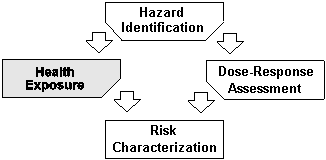 Scientists and government
officials use a four-step process called risk assessment to estimate people's
increased risk of health problems as a result of exposure to a toxic air
pollutant. An exposure assessment is one step of that process and is used
to determine how much of the pollutant people are exposed to and/or how
many people are exposed.
Scientists and government
officials use a four-step process called risk assessment to estimate people's
increased risk of health problems as a result of exposure to a toxic air
pollutant. An exposure assessment is one step of that process and is used
to determine how much of the pollutant people are exposed to and/or how
many people are exposed.
THE 4-STEP EXPOSURE ASSESSMENT
The exposure assessment is also a four-step process. Step 1 entails identifying pollutants likely to be in the air. In Step 2, the amounts of these pollutants released from different sources are estimated. In Step 3, the concentrations of the pollutants are estimated for the geographic areas of interest. Finally, Step 4 provides estimates of the number of people who breathe air containing the pollutant at different levels or at some selected level, such as a regulatory standard or a health benchmark level.
Step 1 - Identify Pollutants Released
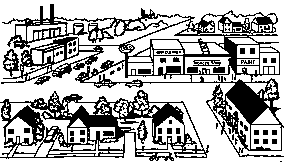 Many chemicals found in factories, consumer
goods, sewage treatment plants, and other sources can be released to the
air as toxic air pollutants. These are some chemicals typically released
in many U.S. communities:
Many chemicals found in factories, consumer
goods, sewage treatment plants, and other sources can be released to the
air as toxic air pollutants. These are some chemicals typically released
in many U.S. communities:
- Perchloroethylene from dry cleaners
- Methylene chloride from degreasers and consumer products, such as paint strippers
- Benzene from gasoline, released when you fill your tank and drive your car
- Chromium from metal plating operations
Step 2 - Estimate Releases of Pollutants from Sources
What are the Sources of Pollutants?
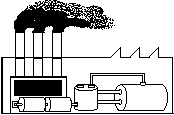
Point sources are sources that have a specific location. Point sources include chemical plants, steel mills, oil refineries, and hazardous waste incinerators. Pollutants can be released when equipment leaks, when material is transferred from one area to another, or when waste is given off from a facility through smoke stacks.

Area sources of toxic air pollutants are made up of many smaller sources releasing pollutants to the outdoor air in a defined area. Examples include automobiles, neighborhood dry cleaners, small metal plating operations, gas stations, and woodstoves.
What are the Patterns of Releases?
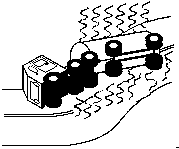
Routine releases, such as those from industry, cars, landfills, or incinerators, may follow regular patterns and happen continuously over time. Other releases may be routine but intermittent, such as when a plant's production is done in batches. Accidental releases can occur during an explosion, equipment failure, or a transportation accident. The timing and, often, the amount released during accidental releases are difficult to predict.
How Much of a Pollutant Is Released?
 To estimate the amount of a routine release
engineers sometimes use a monitor to sample the pollutant as it is released.
The amount collected in a given time period is measured in a laboratory.
For example, if 10 pounds of pollutant XYZ is collected in an average
hour and the facility runs 24 hours a day, 240 pounds of XYZ per day would
be released.
To estimate the amount of a routine release
engineers sometimes use a monitor to sample the pollutant as it is released.
The amount collected in a given time period is measured in a laboratory.
For example, if 10 pounds of pollutant XYZ is collected in an average
hour and the facility runs 24 hours a day, 240 pounds of XYZ per day would
be released.
Alternatively, engineers can use an emission model to estimate the amount of pollutant released by a particular facility. An emission model is a set of mathematical equations that represent the processes that occur when a facility generates a pollutant. Two kinds of Monitoring a Routine numbers are put Into these mathematical equations: (1) "emission factors," or average emission measurements that are made by measuring emissions from a few "typical" facilities, and (2) "depends on" factors, or factors that are specific to a certain facility and depend on how that facility operates. This kind of estimation is similar to determining the fuel efficiency for your car. The manufacturer provides an average miles per gallon rating when you buy a car. Depending on many factors such as how you drive your car, your actual fuel efficiency may differ. In a similar fashion, engineers use various factors to adjust for differences between a "typical" facility and the facility in question.
Step 3 - Estimate Concentration in Air at Different Locations
What Affects the Concentration of a Pollutant?

The concentration of a pollutant decreases as it travels from the site of release because the pollutant spreads out. The amount of this dilution, or dispersion, in the air depends on weather -- especially wind direction and speed. Dispersion also depends on the terrain, whether it is on flat or mountainous land or in a valley.
Other factors can affect the concentration, or level of a pollutant at a given location. The amount of a pollutant at any one location can vary over time depending on the pattern of releases. For example, industrial processes can release some pollutants only at certain times and other pollutants continuously. The location of the release affects the concentration -- a pollutant can be released from smoke stacks high in the air or can leak from equipment or storage tanks near the ground. The ground-level concentration near a facility is generally lower when a pollutant is released from high stacks because the pollutant is more diluted when it reaches the ground. Other factors that affect concentration include the temperature and speed of the gas released through the smoke stack and the location of places in the facility where it is released.
What Is the Concentration of a Pollutant at Different Distances from the Source?
Using a technique called dispersion modeling, engineers can estimate the concentration of a pollutant at different distances and directions from the source. The computer model is used to calculate these estimates from information about the amount of pollutant released, the weather and terrain around the source, and other factors that affect the concentration of the pollutant.
Step 4 - Estimate the Number of People Exposed
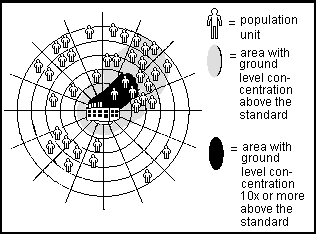 For a point source, researchers
estimate the number of people living in various areas surrounding the
site of release with a computer model that uses census information tor
wider and wider rings around the point source. For an area source, the
computer model uses census information to estimate the population living
in the area of interest. Where warranted, census estimates can be adjusted
to reflect daily and seasonal population movements.
For a point source, researchers
estimate the number of people living in various areas surrounding the
site of release with a computer model that uses census information tor
wider and wider rings around the point source. For an area source, the
computer model uses census information to estimate the population living
in the area of interest. Where warranted, census estimates can be adjusted
to reflect daily and seasonal population movements.
Using dispersion and population information in models, agencies can estimate the number of people exposed to varied concentrations of a chemical. To aid decision makers, these models can compare exposures to some selected benchmark, such as a state pollution standard or a level with a known health effect. For example (see figure below), someone standing at the northeast fence line of a factory's property might be exposed to 10 times the state standard while someone living a little further from the factory might be exposed to 2 times the standard. Someone living to the southwest may be exposed to very low levels below the state standard.
SUMMING IT ALL UP
- Assessing people's exposure to pollutants is one step of a risk assessment.
- Exposure assessment has four steps:
- Identify pollutants that may be released.
- Estimate the amount of pollutants released from all sources, or the source of particular concern, using air samples or emission models.
- Estimate concentrations of pollutants in air in the geographic area of concern by using dispersion models with information about emissions, source locations, weather, and other factors.
- Estimate the number of people exposed to different concentrations of the pollutant at different geographic locations.
FOR MORE INFORMATION
- Chemicals in Your Community: A Guide to the Emergency Planning and Community Right-to-Know Act.
- Write to: Emergency Planning and Community Right-to-Know Information, U.S. EPA, OS-120, 1200 Pennsylvania Ave, NW, Washington, DC 20460
- Trends in the Quality of the Nation's Air.
- Write to: Public Information Center PM-211 B, U.S. EPA, 1200 Pennsylvania Ave, NW, SW, Washington, DC 20460
- **Toxic Chemicals: What They Are, How They Affect You.
- **Document no longer available.
- Chemical Risk: A Primer.
- Write to: American Chemical Society, Department of Government Relations and Science Policy, 1155 16th Street, NW, Washington, DC 20036
Other Health Risk Publications
Risk Assessments for Toxic Air Pollutants: A Citizen's Guide.
